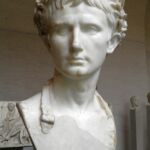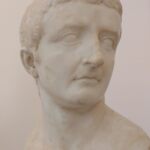Via Appia in Ancient Rome was the main cemetery avenue. There were countless monuments and monumental tombs of the most important Roman families. Among them, there were also mass graves for a less wealthy society.
During the archaeological work carried out in 1726 on Via Appia, an interesting building was found, which was later called Monumentum Liviae – columbarium. Erected at the end of the reign of Emperor Augustus, it was a mass tomb containing over a thousand cremated remains of slaves and liberators. The ashes were placed in urns (ollae) and these were placed in small niches, which may resemble a dovecote. The Roman word columba means “dove”. Thanks to renewed research on marble plaques in the niches, it was found that more than 90 people buried there worked for Augustus’ wife – Livia, making her supposedly the patron saint of the crypt. There was a kind of hierarchy among the servants in the imperial house.
Everyone took care of their assigned task… so here we have hairdressers, masseurs, doormen, writers and copyists, accountants, valets, woolen, window cleaners, shoemakers, builders, plumbers, furniture polishers, goldsmiths, bakers, suppliers, medics, mummies and even a person who took care of the empress’s pearls, there are even two slaves who were supposed to take care of the official dress of the empress… and others only dealt with putting clothes in chests. Some we know by name, for example, the liberator Auctus – lanipendius was engaged in separating and weighing wool, which he then passed on to the servants working on the looms. Menophilus – calciator took care of the empress’s shoes, Parmeno was responsible only for Livia’s purple robes, Eutaktus – capsarius was taking care of the empress’s chests.
And it is thanks to such finds that we get to know the culture and customs of ancient civilizations.







